Tsuba: A Japanese Masterpiece on the Katana - History and Manga Adaptations
 Unassuming, Yet Full of Meaning
Unassuming, Yet Full of Meaning
Tsuba, while it may seem just a small component of a traditional Japanese sword like the katana, holds profound significance. This unassuming but intricately crafted metal disc, located on the sword's hilt, is not just a practical handguard. The tsuba marks a point where art meets functionality, becoming a testament to refined craftsmanship and aesthetics. For centuries, the tsuba has not only protected sword users from injuries but also reflected the social status, personality, and even philosophical beliefs of samurai and other warriors who bore them.
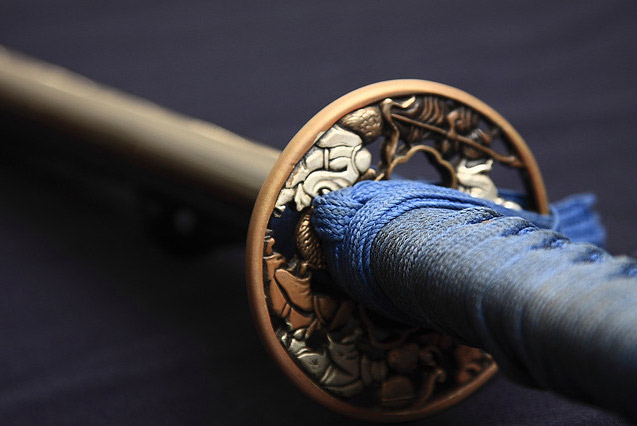
History of the Tsuba
 Etymology of the Name
Etymology of the Name
The linguistic analysis of the name "tsuba" unveils intriguing aspects of Japanese etymology and culture. In the Japanese language, the word "tsuba" (鍔) is written using a single kanji, specifically referring to the handguard of a sword. The meaning of this kanji is closely associated with protection and defense, reflecting the primary function of the tsuba in traditional Japanese weaponry. The etymology of this word is deeply rooted in Japanese history and the art of sword-making, symbolizing both the practical role of the tsuba as a hand protection and its artistic significance as a decorative and representative element.
The origin of the name "tsuba" is a subject of discussion among historians and linguists. Some theories suggest that the word may have derived from ancient terms used in metalworking crafts, referring to the technique of forging or the shape of metal elements. In the Japanese language, the word "tsuba" is also used in a broader context, referring to any forms of guards or barriers, highlighting the universality and significance of this term in Japanese culture. Thus, the tsuba is not only a vital element in the realm of weaponry but also a word that encompasses rich cultural and historical meaning, reflecting the evolving practices and technologies in Japanese history.
 8th-9th Century CE
8th-9th Century CE
Tsuba, as an essential element of Japanese swords, began to gain importance during the Nara (710-794 CE) and Heian (794-1185 CE) periods. Initially, these were simple, functional guards, often made of iron, designed to protect the hand. At this time, the tsuba was more practical than artistic.
Kamakura Period (1185-1333)
During the Kamakura period, as samurai began to play a crucial role in Japanese society, the tsuba gained significance. The increased need for protection during combat led to the development of more durable and effective forms of tsuba.
Muromachi Era (1336-1573)
The Muromachi period brought with it the development of combat techniques and sword-making art, which also influenced the tsuba. Richer decorations and more complex designs began to appear, often with themes related to nature, religion, and philosophy.
 Azuchi-Momoyama Period (1568-1600)
Azuchi-Momoyama Period (1568-1600)
This period was characterized by a growing interest in art and craftsmanship. Masters such as Goto Yujo (1440-1512) and his descendants from the Goto family contributed to the development of sophisticated tsuba decorating techniques, introducing precious metals and refined patterns.
Peaceful Period - Edo (1603-1868)
During the Edo period, when Japan experienced a time of peace and stability, the tsuba became more decorative. Interest in the art and aesthetics of the tsuba increased, resulting in the emergence of various schools and styles, such as the Owari or Higo school.
Meiji Era
The Meiji period (1868-1912) brought modernization and changes in Japanese society. Western influence and the decline of the samurai class affected the tsuba, turning it more into a collector's item than a practical element of the sword.
 20th Century
20th Century
In the 20th century, the tsuba gained international recognition as a form of art. Collectors and museums around the world began to appreciate its aesthetic and historical values. Exhibitions and auctions of tsuba became popular, emphasizing its place in world art.
Today
Today, the tsuba is valued for both its historical and artistic worth. It is not just a testament to the craftsmanship of past eras but also serves as an inspiration for contemporary artists and creators, ranging from jewelry designers to manga and anime authors, demonstrating the enduring legacy of Japanese culture and art.
Tsuba – A Crafted Masterpiece, A Work of Art
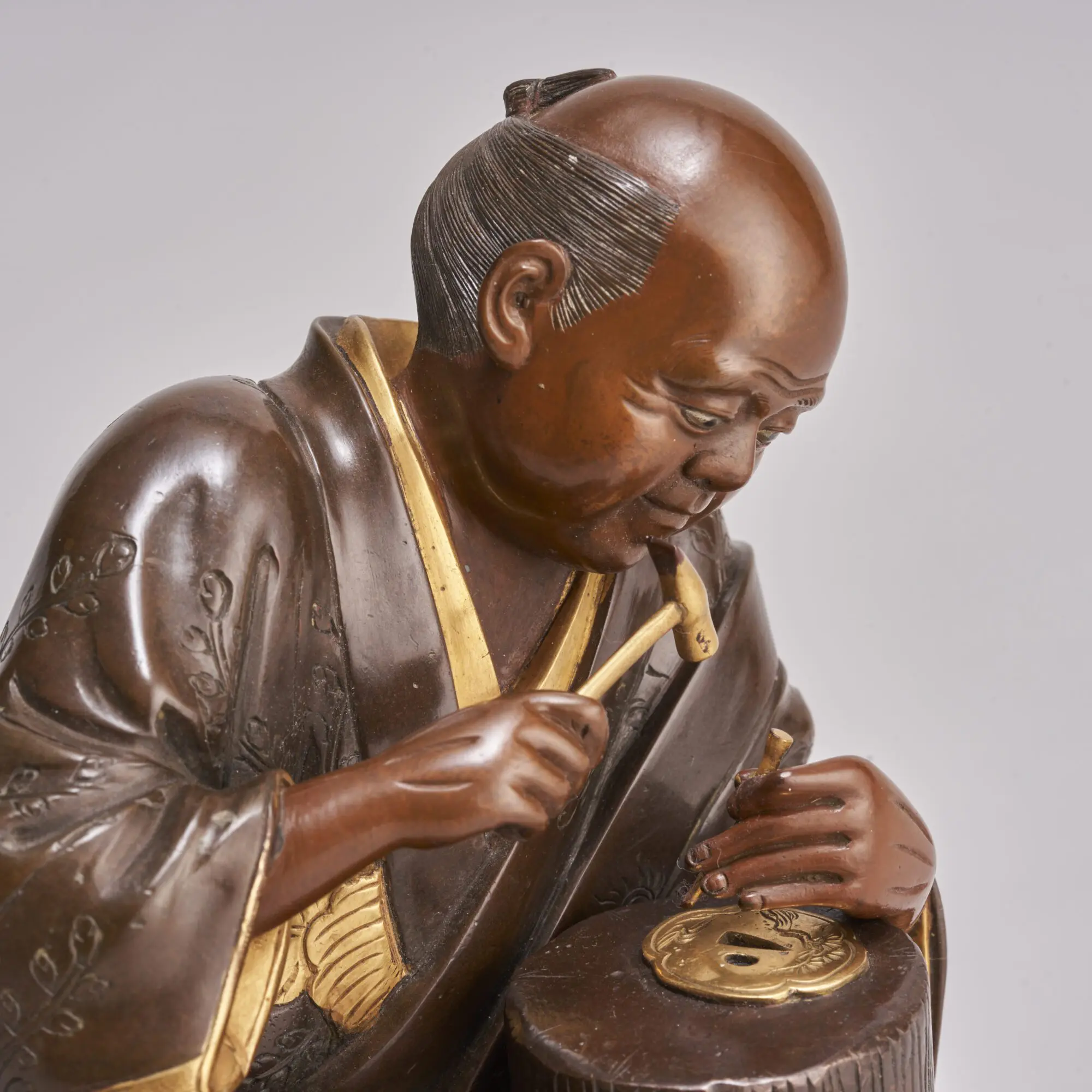
The diversity in tsuba design was vast, ranging from simple, functional patterns to intricate scenes from mythology and nature. The materials used in tsuba creation were primarily various types of steel, but also precious metals like gold and silver. An interesting fact is that during the Edo period, brass tsubas became popular, reflecting the rising merchant class who preferred more decorative items.
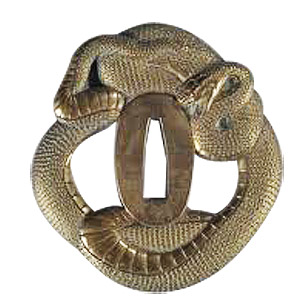
Though rooted in tradition, the tsuba was also a field of innovation. Masters like Unno Shomin (1844-1915) experimented with new styles and techniques, blending traditional craft with modern artistic trends. His works often combined Western elements with Japanese aesthetics, creating unique works of art. Such innovations underscore how the tsuba was and continues to be a living element of Japanese culture, evolving and adapting over the centuries.
Tsuba in Pop Culture
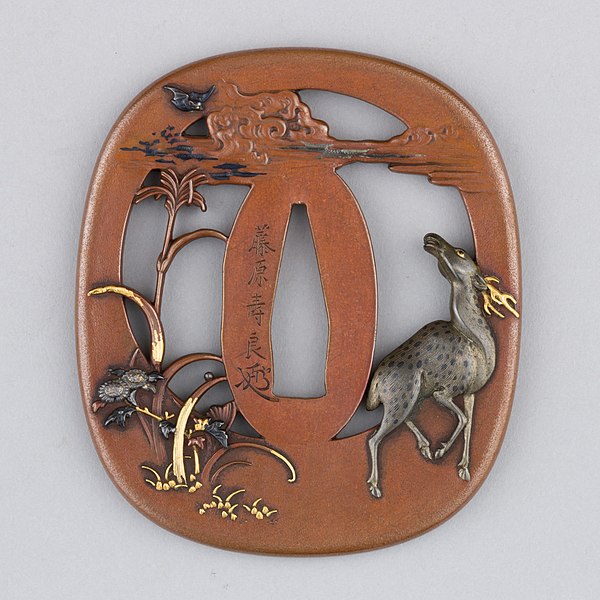
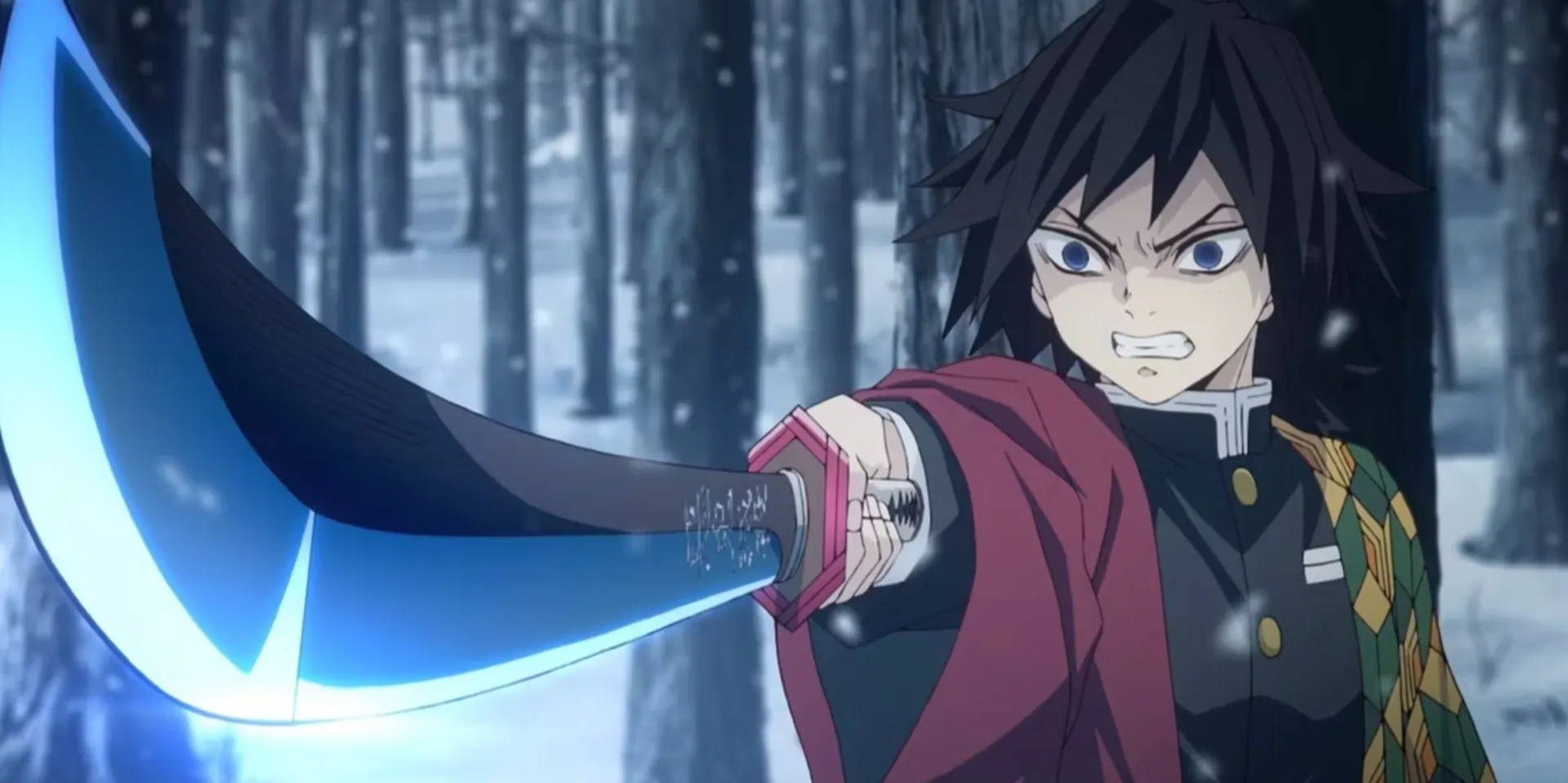
An interesting phenomenon is how the tsuba influences the recognition and understanding of Japanese culture worldwide. Through its presence in popular media, the tsuba becomes not only an aesthetic object but also an educational one, introducing a global audience to the world of traditional Japan. This phenomenon is evident, for example, in the growing interest in collecting authentic tsubas, which are often displayed in art museums and sold at auctions as valuable works of art.
Tsuba in Manga and Anime
 "Rurouni Kenshin" (Nobuhiro Watsuki):
"Rurouni Kenshin" (Nobuhiro Watsuki):
"Rurouni Kenshin" is a series in which the tsuba is not just a decorative element of the sword but plays a significant symbolic and narrative role. Here is a detailed description of its meaning and role in this anime.
In "Rurouni Kenshin," the central element is the sakabato, a reverse-edged samurai sword belonging to the main character, Kenshin Himura. The tsuba of this sword, shaped like a cross, is exceptionally symbolic. It represents the intersecting paths of Kenshin's life - his past as a ruthless assassin known as Hitokiri Battosai, and his current life as a wandering rōnin who has sworn not to kill. This tsuba is a key narrative element, reminding of Kenshin's moral dilemmas and inner conflicts.
In the series, Kenshin's sakabato tsuba also has practical significance. In episodes where Kenshin defends the innocent or confronts enemies, the tsuba provides physical protection against attacks. In the episode where Kenshin faces Aoshi Shinomori, the leader of the Oniwabanshu, the tsuba plays a crucial role in Kenshin's defense, showcasing its functionality in the context of samurai combat.
At various points in the series, changes in Kenshin's tsuba reflect his character development. For instance, when his sakabato is broken and rebuilt, the new tsuba symbolizes a new chapter in his life and a renewed commitment to living without violence. This shows how the tsuba is not static but evolves with the character.
The tsuba of Kenshin's sakabato is also a physical connection to his past. It reminds of his days as Hitokiri Battosai and the burden he carries for his former actions. In retrospective episodes, where we see a young Kenshin with a different tsuba, we see a contrast between his former and current selves, emphasizing how the tsuba can be a narrative bridge between different stages of a character's life.
"Bleach" (Tite Kubo): In "Bleach," the tsuba serves as a distinct identifier for the spiritual swords, called Zanpakutō, used by Shinigami. Each tsuba is unique and reflects the personality and power of its owner. An example is the tsuba of the main character, Ichigo Kurosaki's sword, which evolves along with his development.
"Samurai Champloo" (Shinichirō Watanabe): In this stylistic blend of Edo and hip-hop, the tsuba is an important visual element that highlights the individuality of the characters. The tsuba used by Mugen, one of the main characters, has an unusual, irregular shape, reflecting his unconventional fighting style and personality.
"Gintama" (Hideaki Sorachi): In the universe of "Gintama," the tsuba often serves as a humorous or symbolic element. For example, when the main character, Gintoki Sakata, breaks the rules of sword usage, his tsuba is often depicted in an exaggerated manner, highlighting the comedic nature of the series.
"Afro Samurai" (Takashi Okazaki): In this series, the tsuba is not only a protective element but also a key aesthetic element that emphasizes the series' unique, mixed style. Afro, the main character, uses a katana with a simple but distinctive tsuba, complementing his raw and minimalist style.
"Sword Art Online" (Reki Kawahara): In the virtual world of SAO, the tsuba serves as an important element in weapon design, adding individuality and character to the characters. Kirito, the main character, wields a sword with an exceptionally designed tsuba, highlighting his skills and status in the game.
 "Demon Slayer: Kimetsu no Yaiba" (Koyoharu Gotōge): In this series, the tsuba is not only aesthetically important but also reflects the rank and abilities of the characters. For example, the swords used by the Demon Slayers have tsubas that are tailored to their techniques and personalities, which is key for visual storytelling.
"Demon Slayer: Kimetsu no Yaiba" (Koyoharu Gotōge): In this series, the tsuba is not only aesthetically important but also reflects the rank and abilities of the characters. For example, the swords used by the Demon Slayers have tsubas that are tailored to their techniques and personalities, which is key for visual storytelling.
"InuYasha" (Rumiko Takahashi): In "InuYasha," the tsuba of Tessaiga, the main character's sword, is symbolic. Its simple yet characteristic form represents the power and heritage of Tessaiga, being a central element of the series' plot. This tsuba becomes a recognizable symbol of InuYasha's strength and courage.
"Samurai Deeper Kyo" (Akimine Kamijyo): In this anime and manga, the tsuba of the main character's katana, Kyoshiro Mibu, plays a symbolic role. Its unique design reflects both his mysterious past and the power of his alter ego, the Demon Eyes. The visual representation of the tsuba underscores the dual nature of Kyoshiro's character.
 "Naruto" (Masashi Kishimoto): In "Naruto," although the tsuba is not a main element, it appears at various moments in the series. For example, the sword of Zabuza Momochi has a distinctive, large tsuba, emphasizing the strength and brutality of this antagonist. This is an example of how the tsuba can be used to underscore the characteristics of a character.
"Naruto" (Masashi Kishimoto): In "Naruto," although the tsuba is not a main element, it appears at various moments in the series. For example, the sword of Zabuza Momochi has a distinctive, large tsuba, emphasizing the strength and brutality of this antagonist. This is an example of how the tsuba can be used to underscore the characteristics of a character.
"Vagabond" (Takehiko Inoue): "Vagabond," based on the life of the legendary samurai Miyamoto Musashi, presents the tsuba as an essential element of samurai culture. The tsubas in this series are not only accurately crafted from a historical perspective but also reflect the development of characters and changing circumstances in which they find themselves.
"Claymore" (Norihiro Yagi): In "Claymore," although the characters mainly use swords without tsubas, there are a few exceptions where the tsuba has significance. For instance, the sword of Clare has a distinctive tsuba, visually distinguishing her from other warriors and highlighting her unique status in the series' world.
The Contemporary Face of the Tsuba
The tsuba, once a key element of the samurai sword, today plays a significant role in Japanese culture, becoming a symbol of the union of tradition and modernity. Contemporary craftsmen and artists continue to create tsubas, combining traditional techniques with new, innovative designs and materials. This unique fusion of old and new makes the tsuba both a valued collector's item and an inspiration for new generations of artists. Interestingly, some contemporary tsubas are treated as independent works of art, displayed in galleries and museums worldwide, testifying to their artistic value and complexity.
At the same time, in the world of manga, anime, and other media, the tsuba has endured as an important cultural element, showcasing its significance in new contexts. In this way, the tsuba not only conveys the ancient traditions of Japanese art and craftsmanship but also serves as a bridge connecting the past with the present and future. It symbolizes not just historical knowledge and skills but also an ongoing capacity for adaptation and innovation. Thus, the tsuba remains a living testament to the rich and dynamic culture of Japan, being simultaneously connected to its historical heritage and the modern world of art and entertainment.
"Strong Japanese Women"
see book by the author
of the page
未開 ソビエライ
An enthusiast of Asian culture with a deep appreciation for the diverse philosophies of the world. By education, a psychologist and philologist specializing in Korean studies. At heart, a programmer (primarily for Android) and a passionate technology enthusiast, as well as a practitioner of Zen and mono no aware. In moments of tranquility, adheres to a disciplined lifestyle, firmly believing that perseverance, continuous personal growth, and dedication to one's passions are the wisest paths in life. Author of the book "Strong Women of Japan" (>>see more)
Personal motto:
"The most powerful force in the universe is compound interest." - Albert Einstein (probably)
Mike Soray
(aka Michał Sobieraj)
未開 ソビエライ
An enthusiast of Asian culture with a deep appreciation for the diverse philosophies of the world. By education, a psychologist and philologist specializing in Korean studies. At heart, a programmer (primarily for Android) and a passionate technology enthusiast, as well as a practitioner of Zen and mono no aware. In moments of tranquility, adheres to a disciplined lifestyle, firmly believing that perseverance, continuous personal growth, and dedication to one's passions are the wisest paths in life. Author of the book "Strong Women of Japan" (>>see more)
Personal motto:
"The most powerful force in the universe is compound interest." - Albert Einstein (probably)
Mike Soray
(aka Michał Sobieraj)
Write us...
Ciechanów, Polska
dr.imyon@gmail.com
___________________
inari.smart
Would you like to share your thoughts or feedback about our website or app? Leave us a message, and we’ll get back to you quickly. We value your perspective!
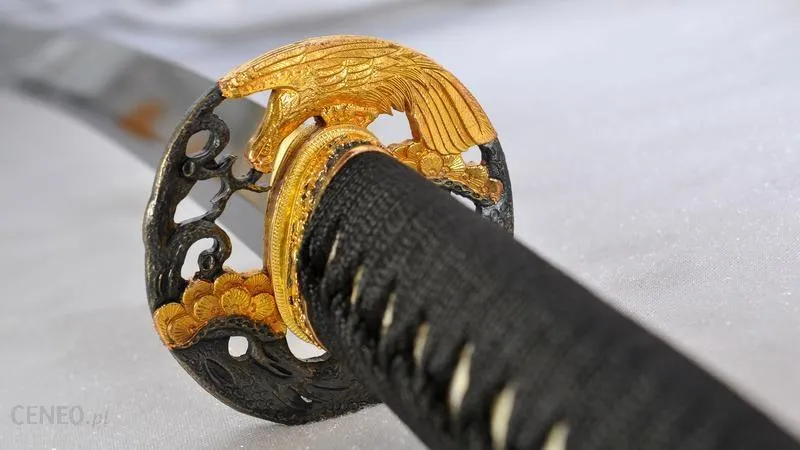 Unassuming, Yet Full of Meaning
Unassuming, Yet Full of Meaning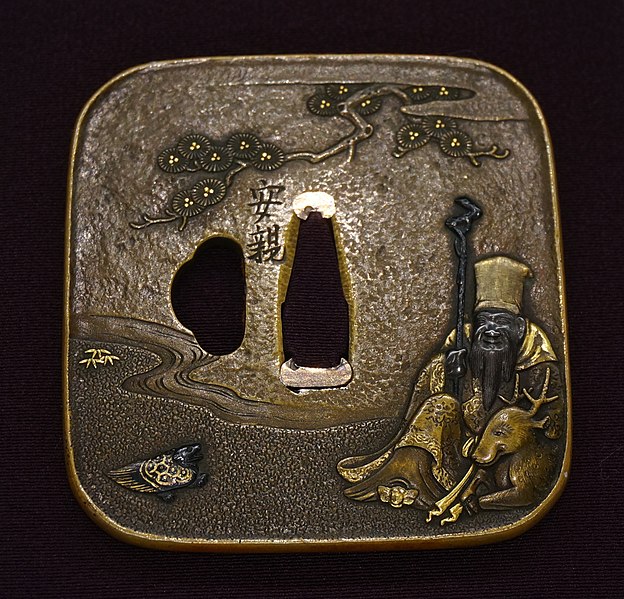 Etymology of the Name
Etymology of the Name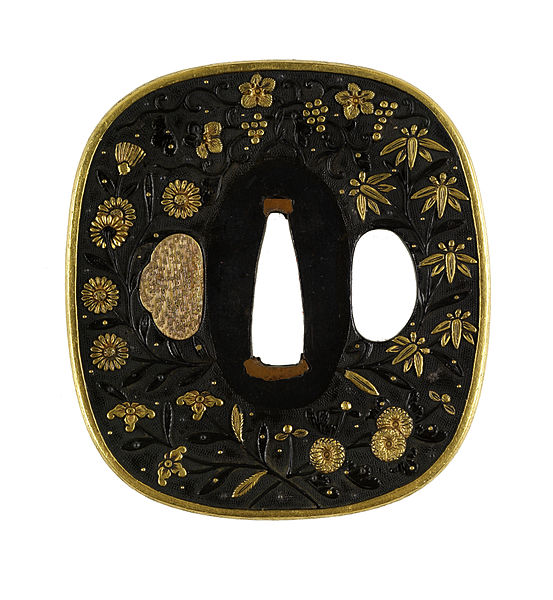 8th-9th Century CE
8th-9th Century CE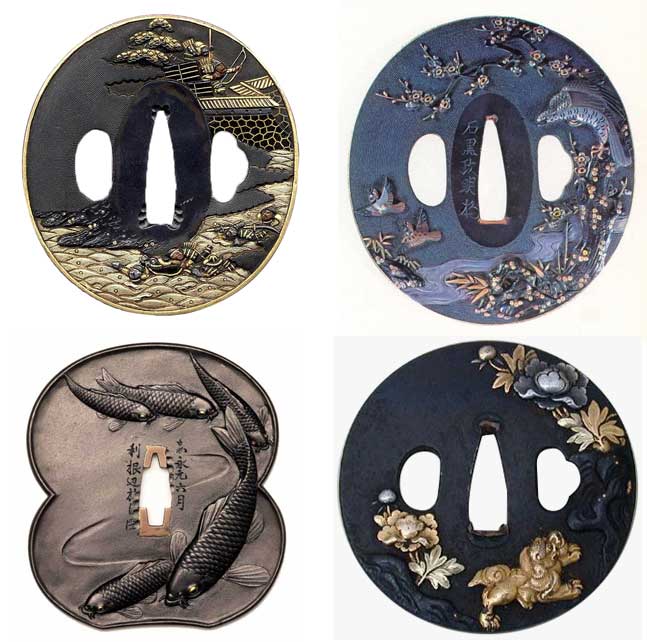 Azuchi-Momoyama Period (1568-1600)
Azuchi-Momoyama Period (1568-1600)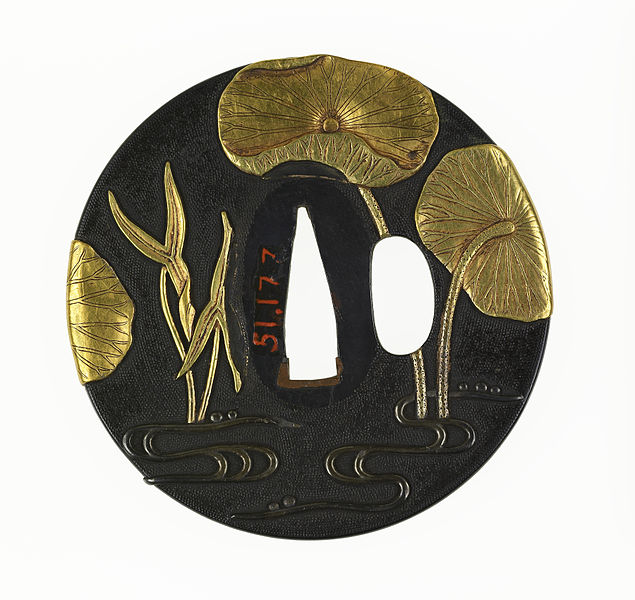 20th Century
20th Century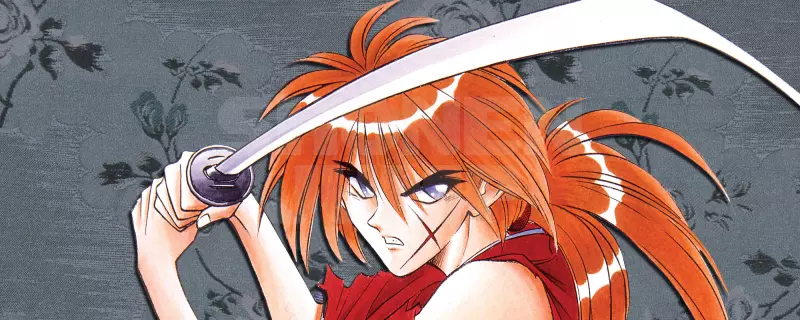 "Rurouni Kenshin" (Nobuhiro Watsuki):
"Rurouni Kenshin" (Nobuhiro Watsuki):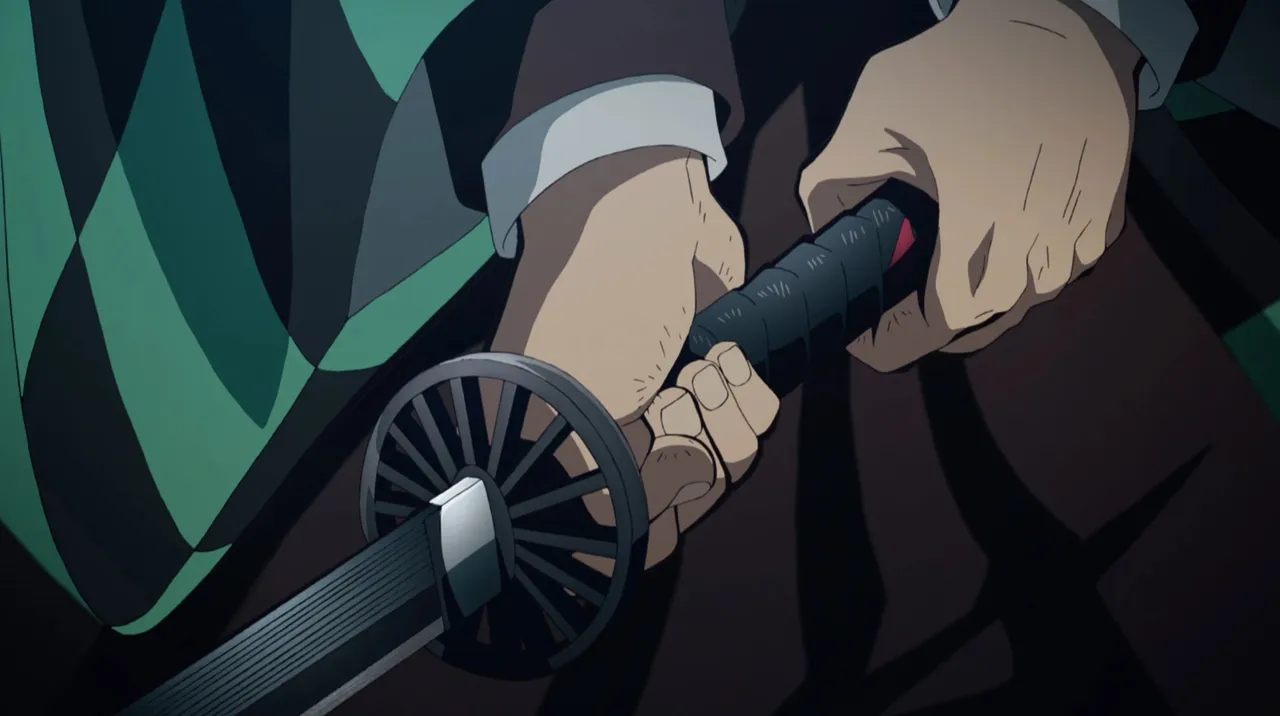 "Demon Slayer: Kimetsu no Yaiba" (Koyoharu Gotōge): In this series, the tsuba is not only aesthetically important but also reflects the rank and abilities of the characters. For example, the swords used by the Demon Slayers have tsubas that are tailored to their techniques and personalities, which is key for visual storytelling.
"Demon Slayer: Kimetsu no Yaiba" (Koyoharu Gotōge): In this series, the tsuba is not only aesthetically important but also reflects the rank and abilities of the characters. For example, the swords used by the Demon Slayers have tsubas that are tailored to their techniques and personalities, which is key for visual storytelling.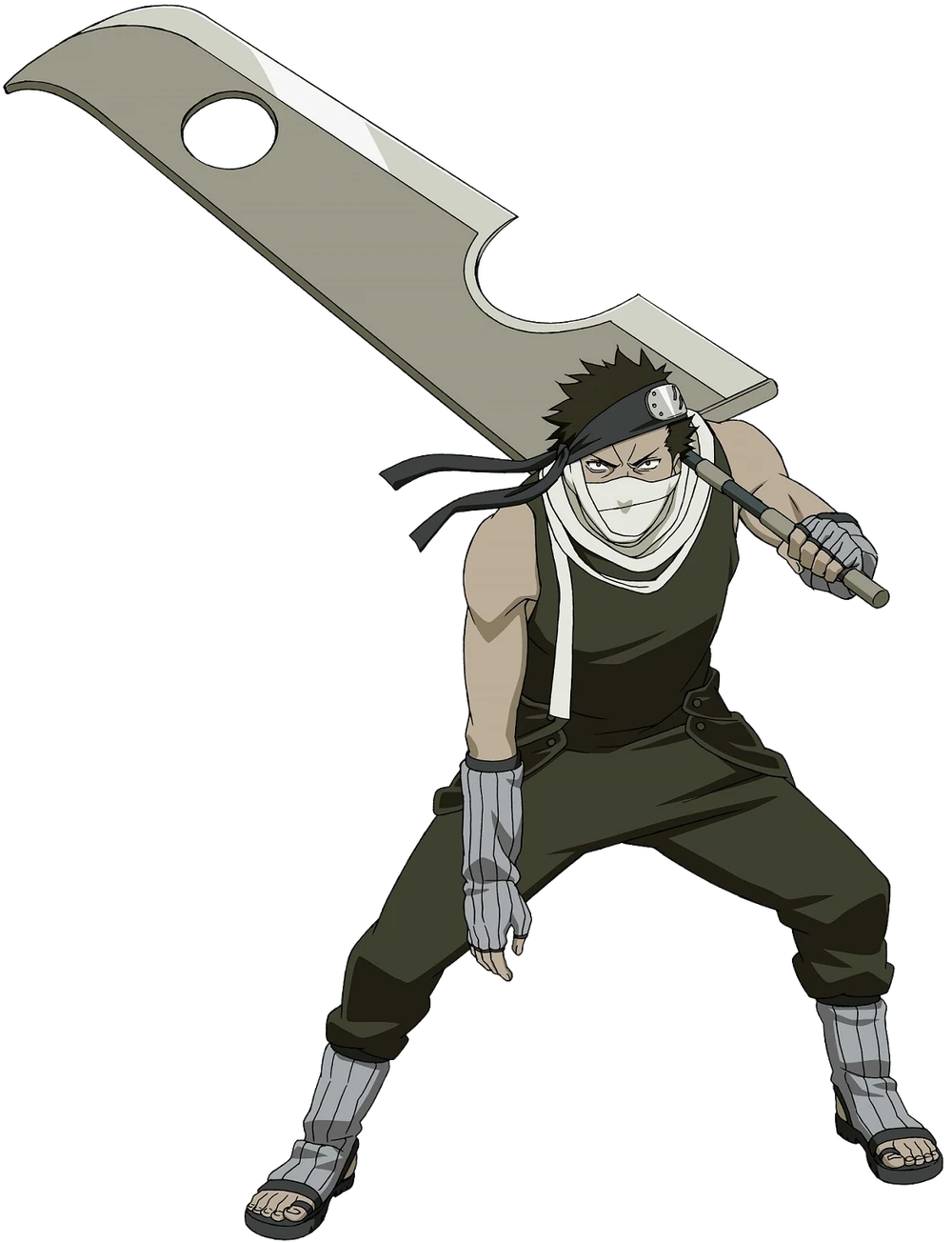 "Naruto" (Masashi Kishimoto): In "Naruto," although the tsuba is not a main element, it appears at various moments in the series. For example, the sword of Zabuza Momochi has a distinctive, large tsuba, emphasizing the strength and brutality of this antagonist. This is an example of how the tsuba can be used to underscore the characteristics of a character.
"Naruto" (Masashi Kishimoto): In "Naruto," although the tsuba is not a main element, it appears at various moments in the series. For example, the sword of Zabuza Momochi has a distinctive, large tsuba, emphasizing the strength and brutality of this antagonist. This is an example of how the tsuba can be used to underscore the characteristics of a character.


